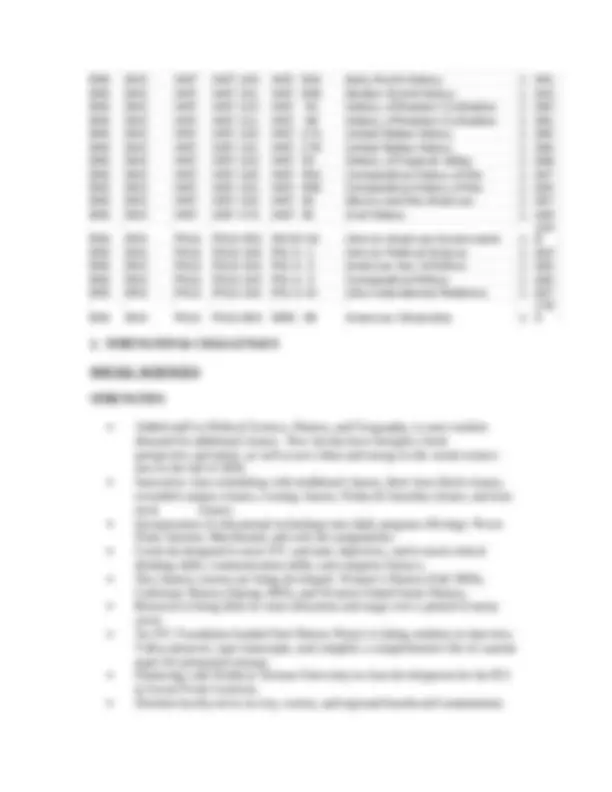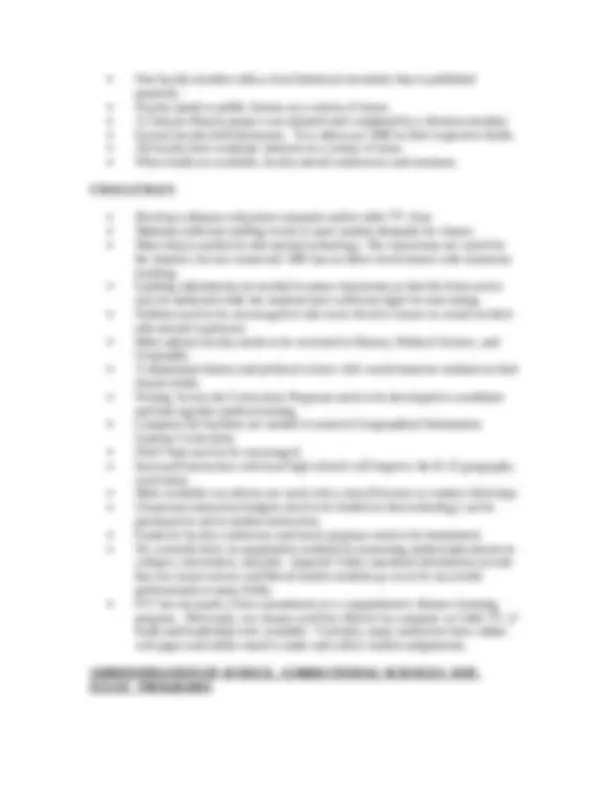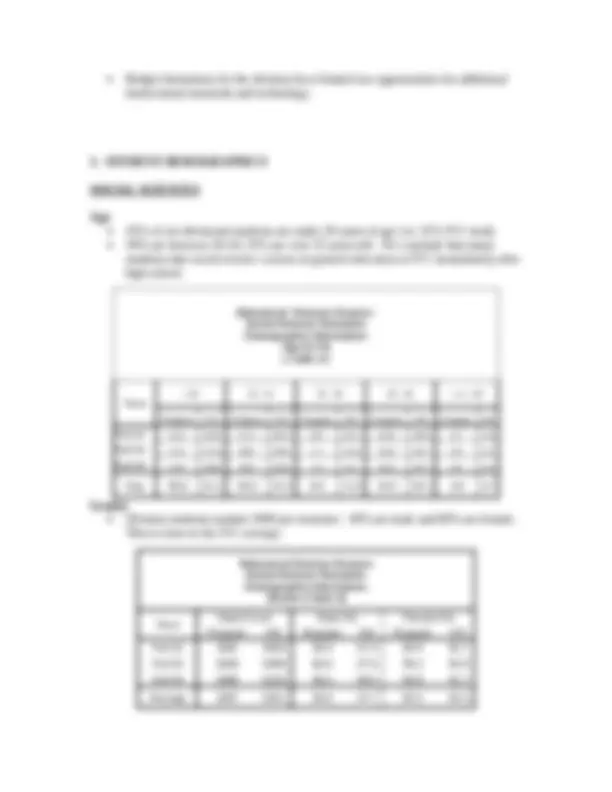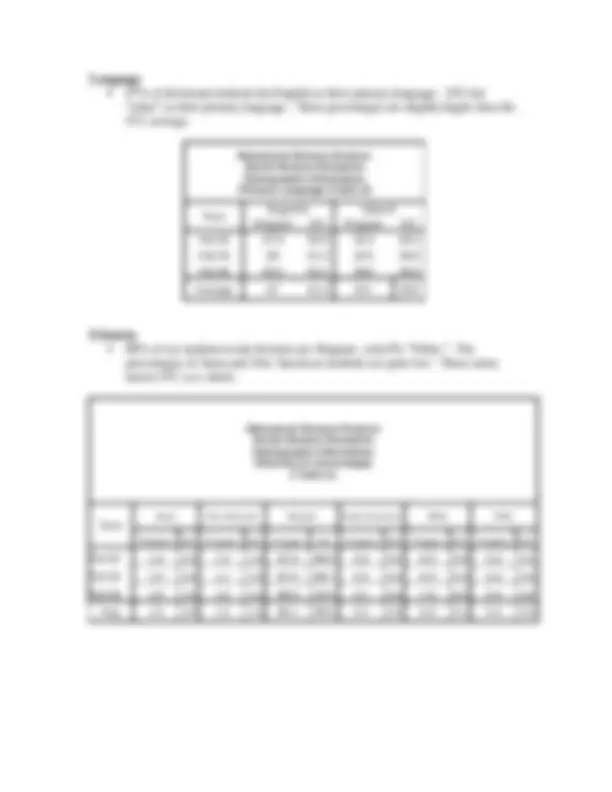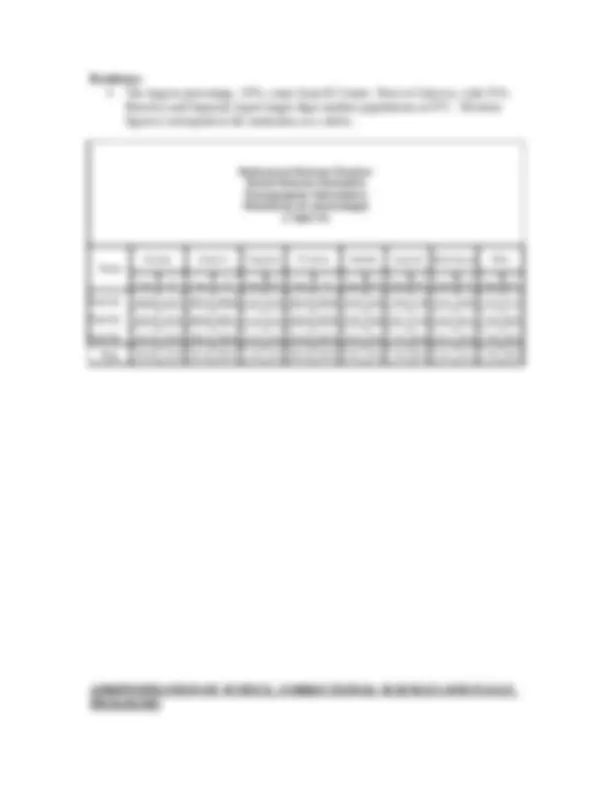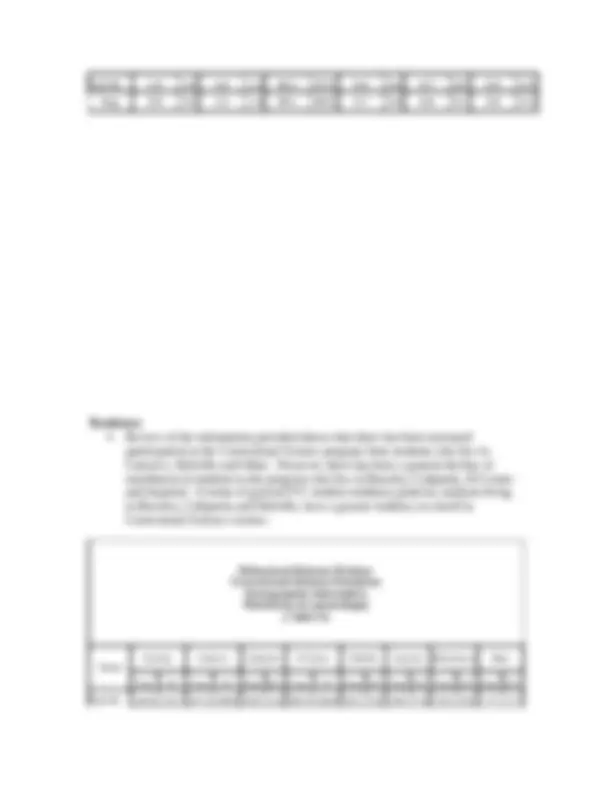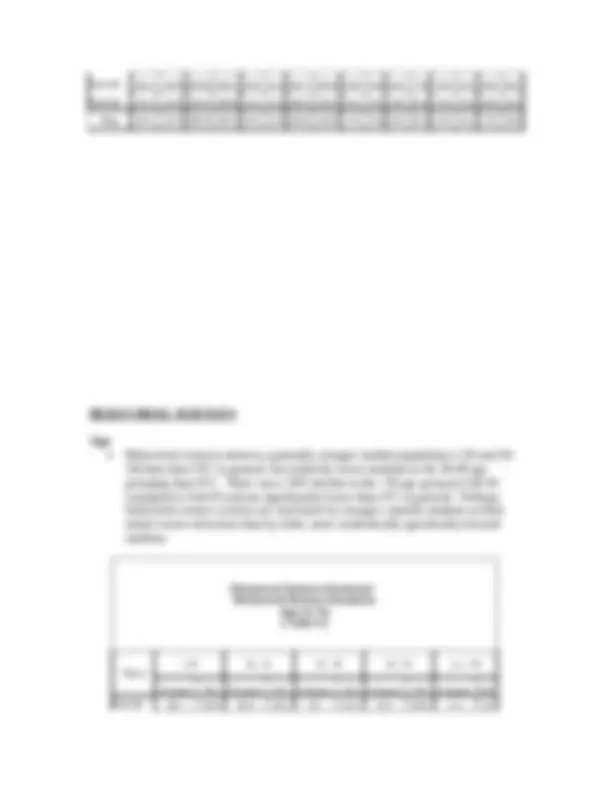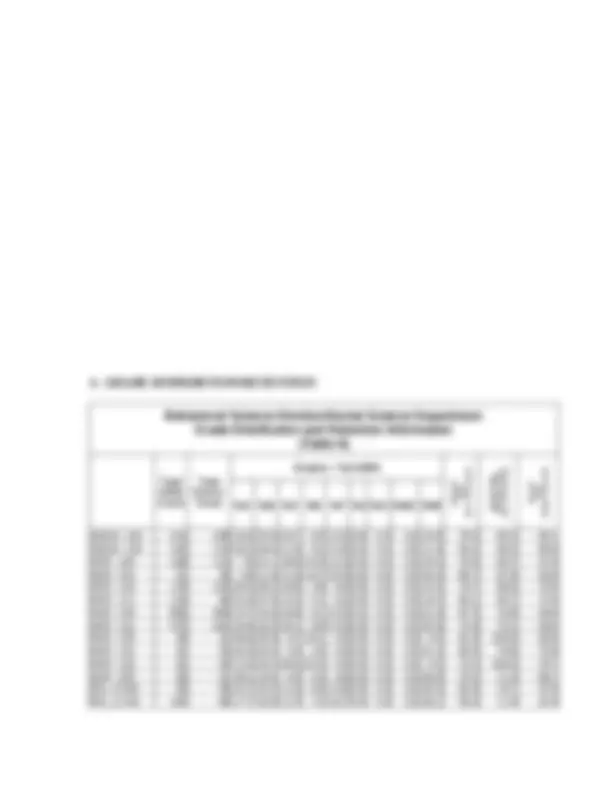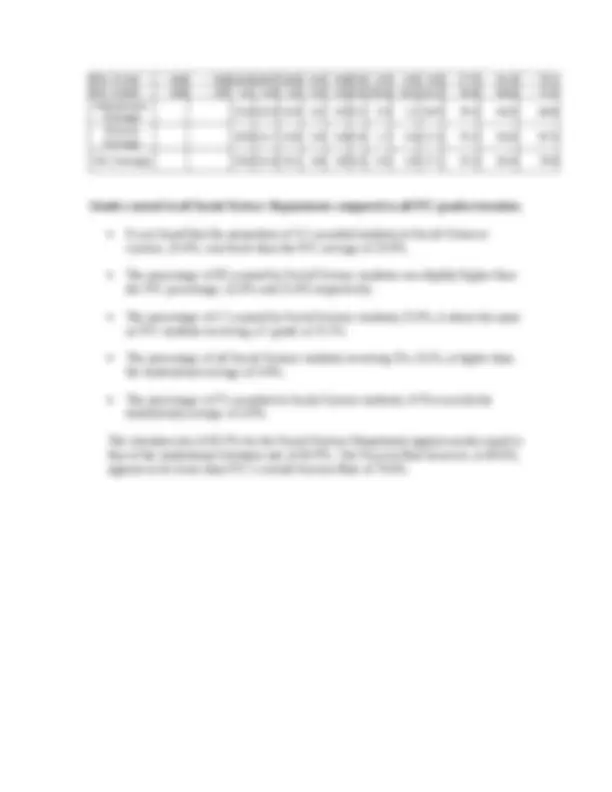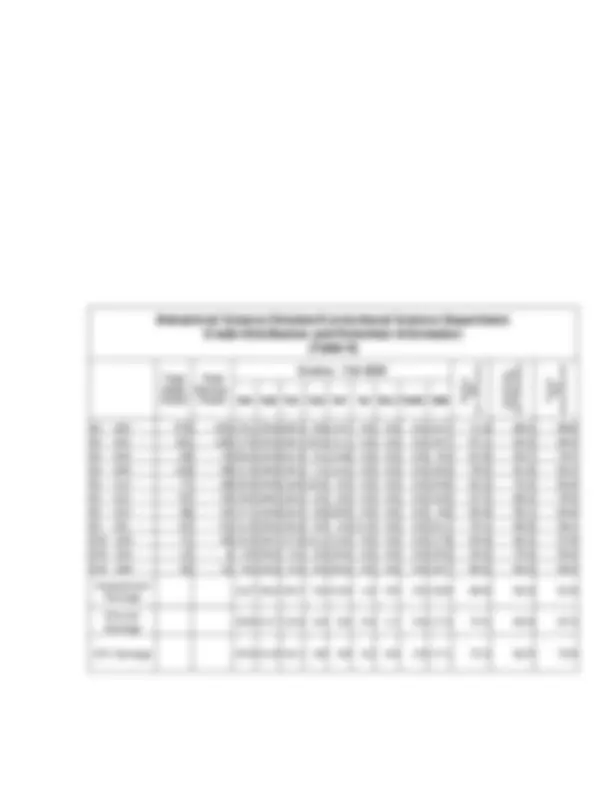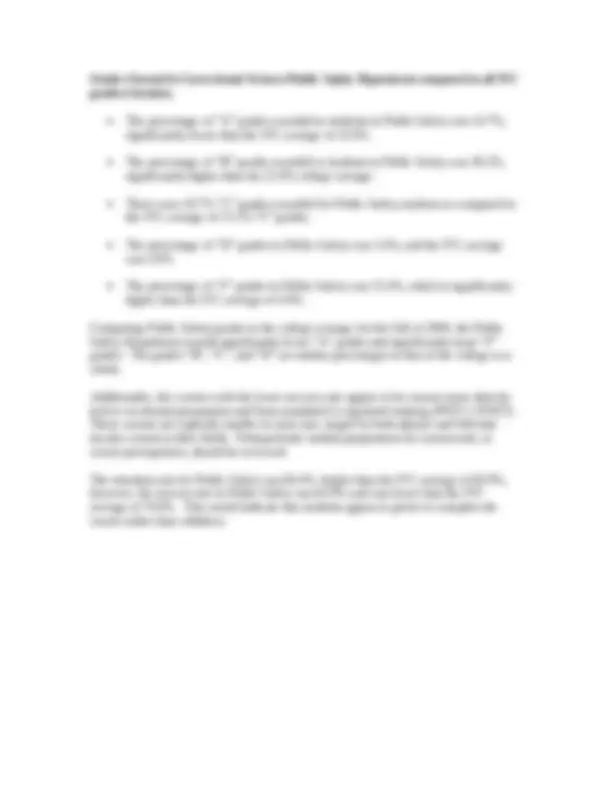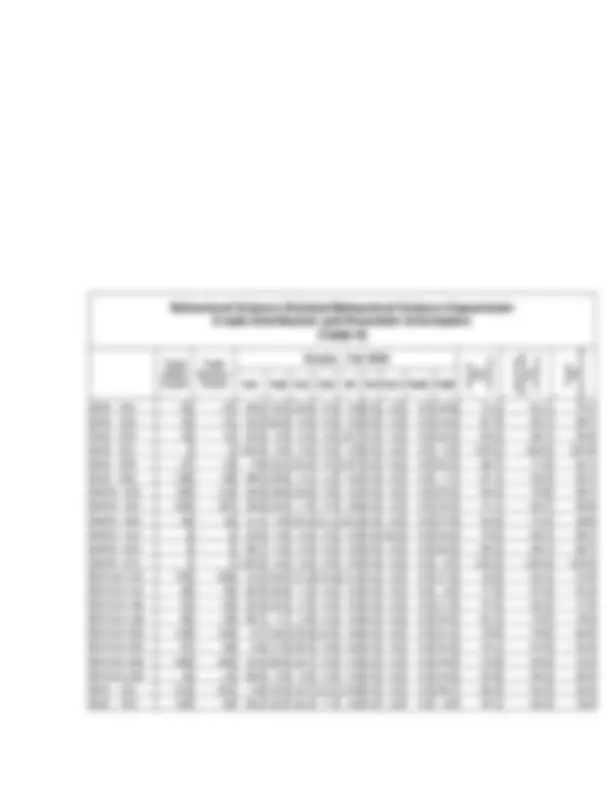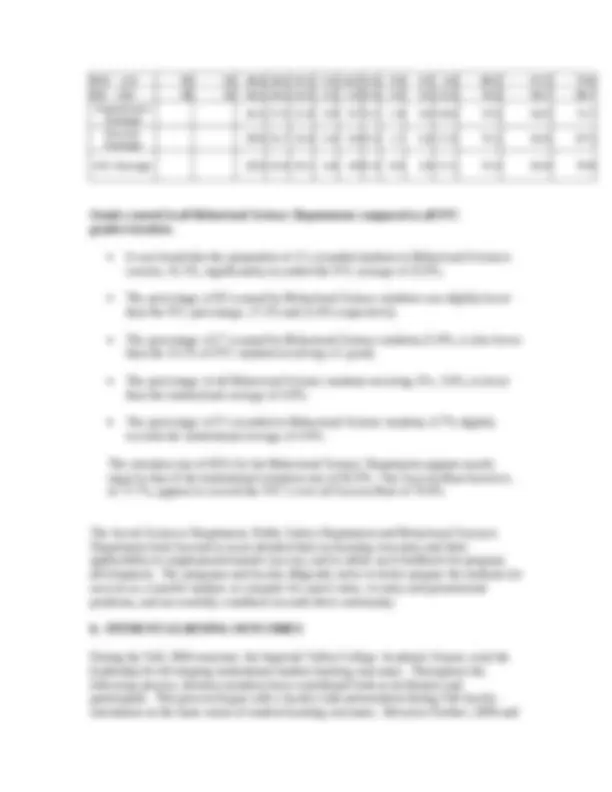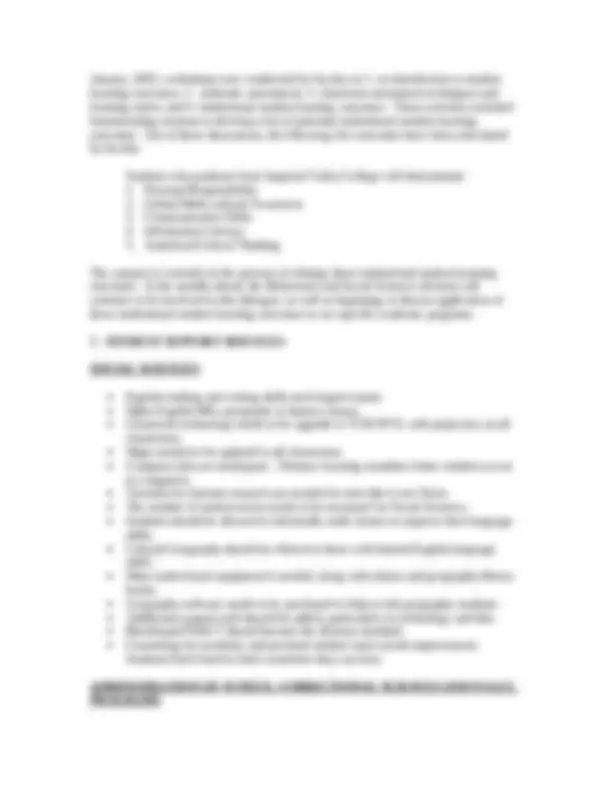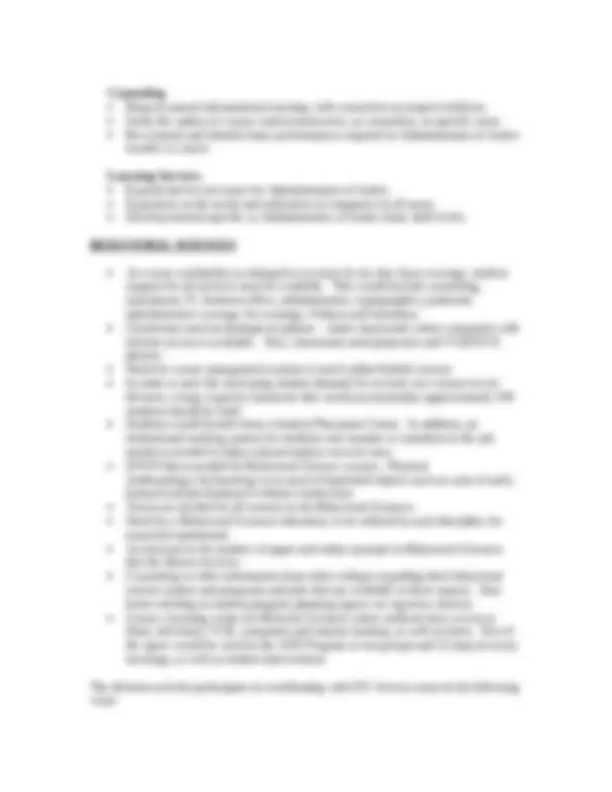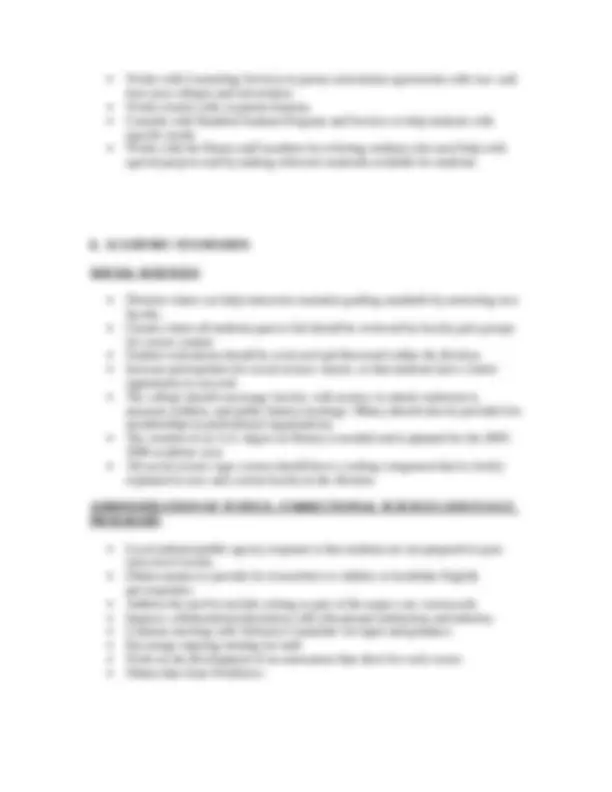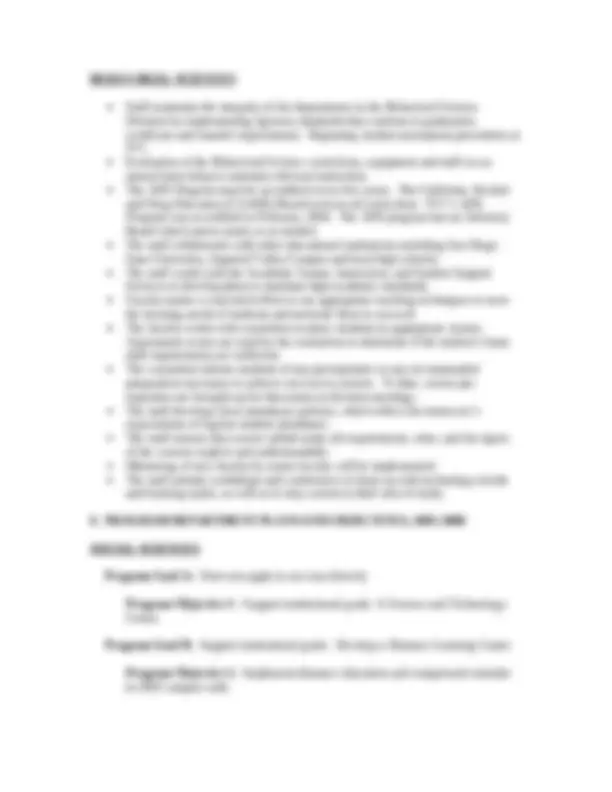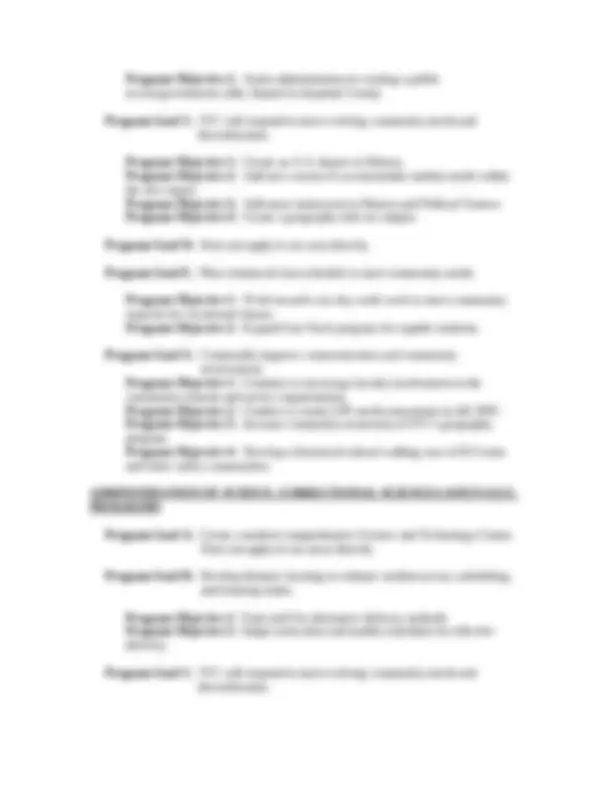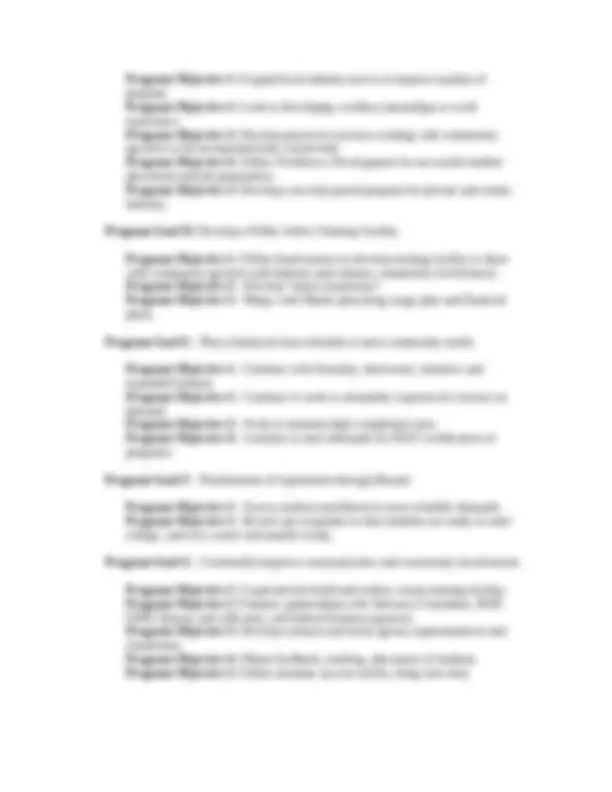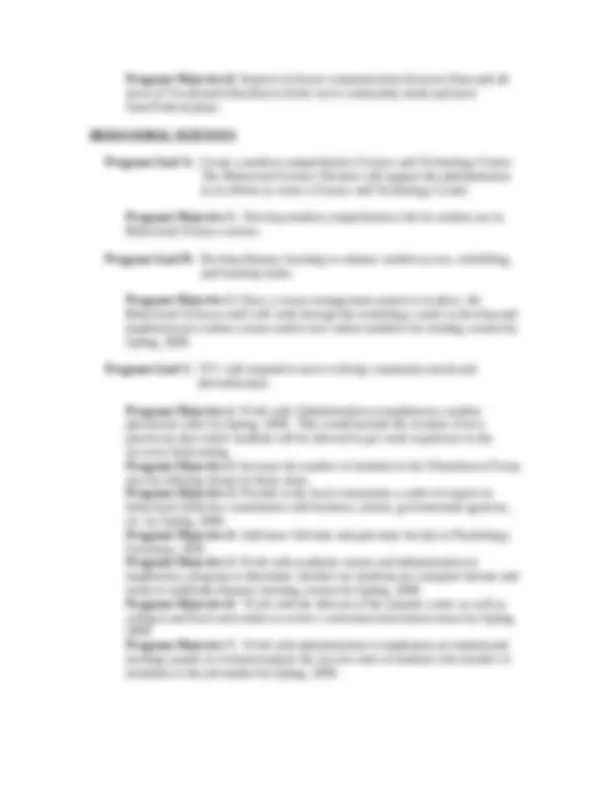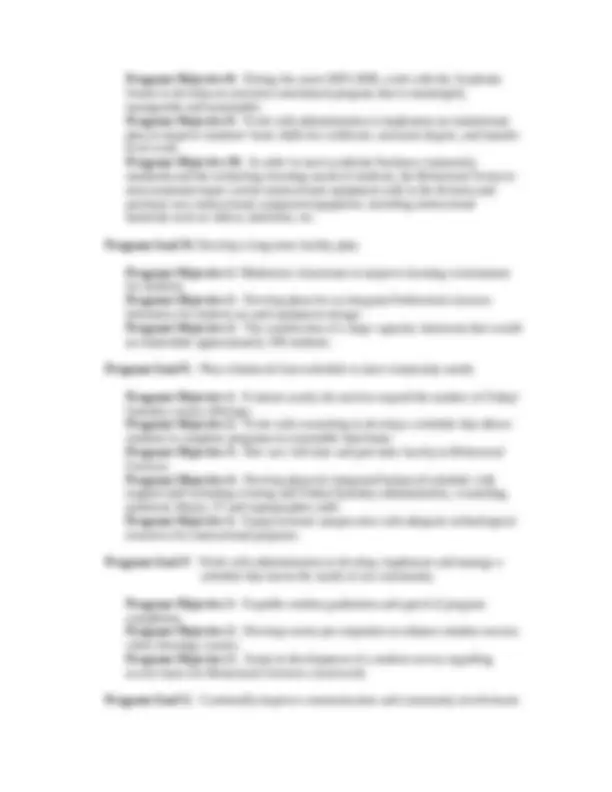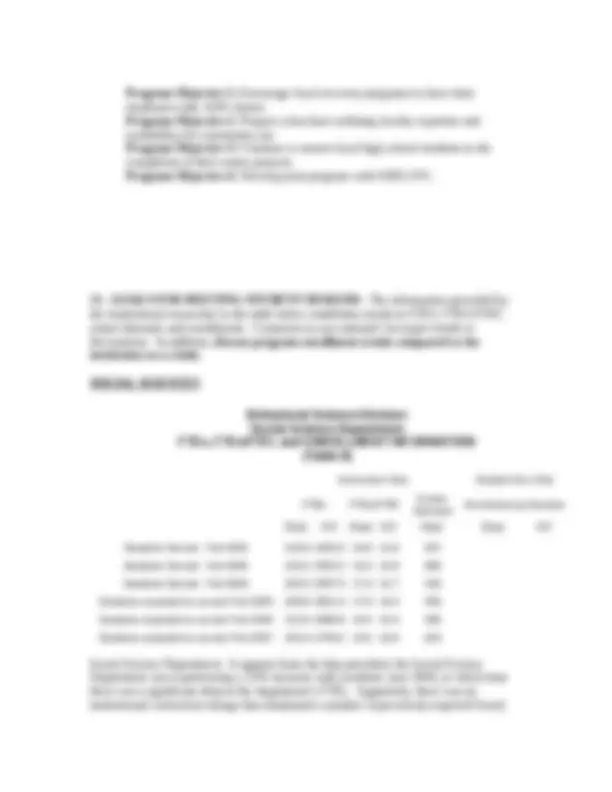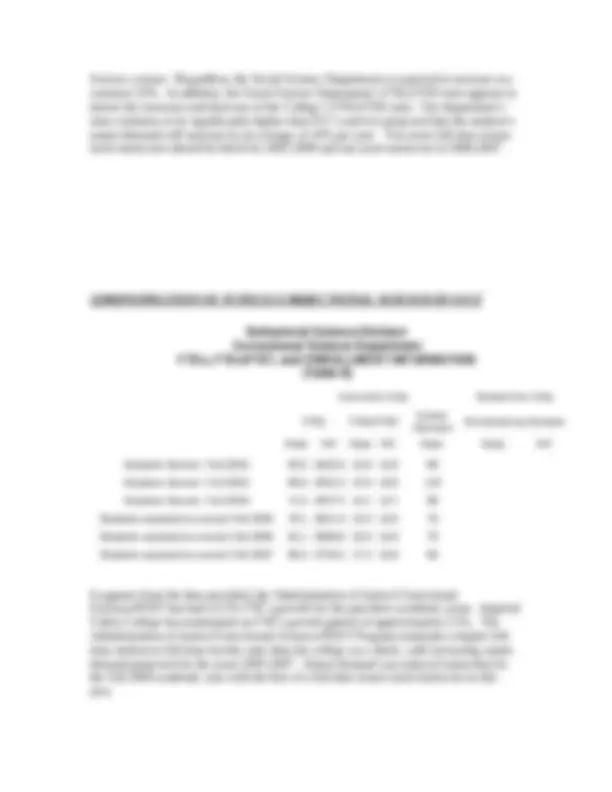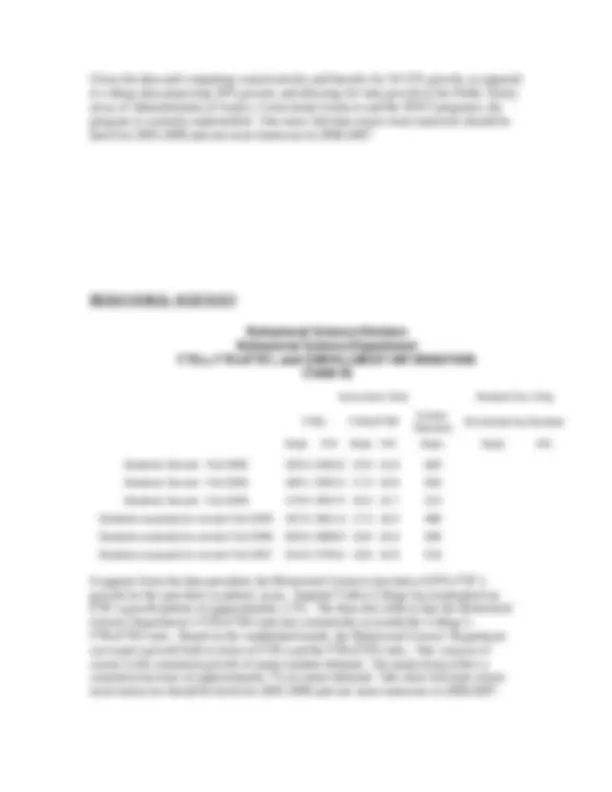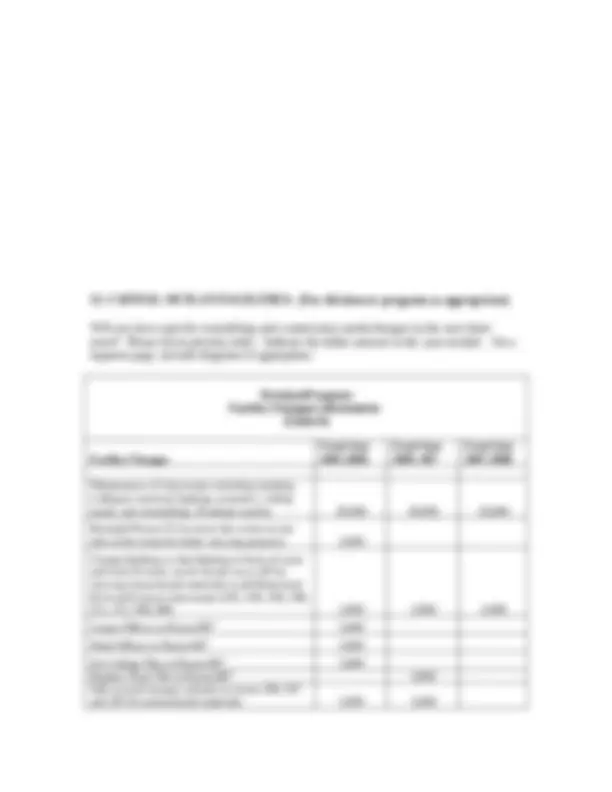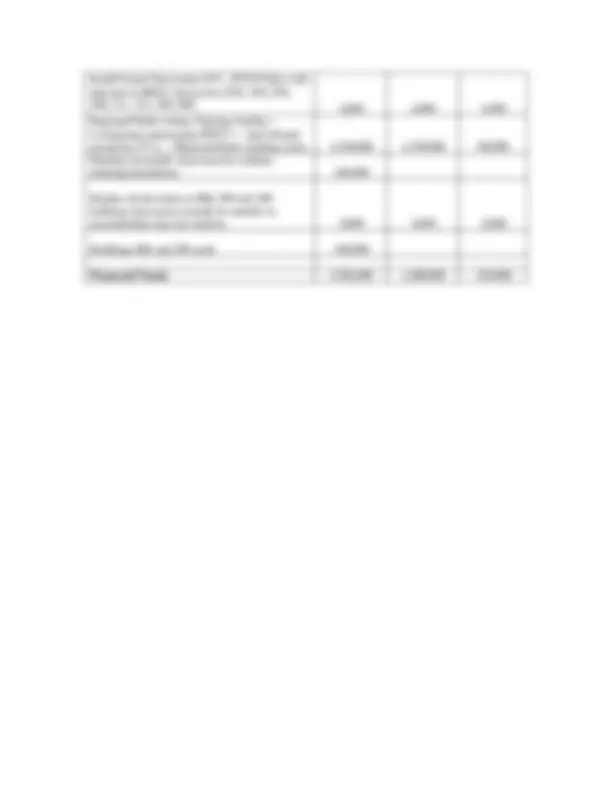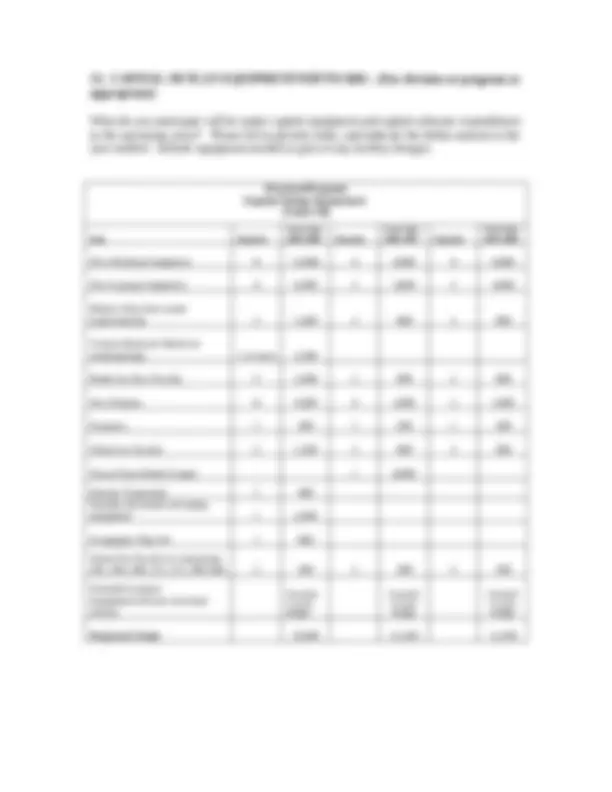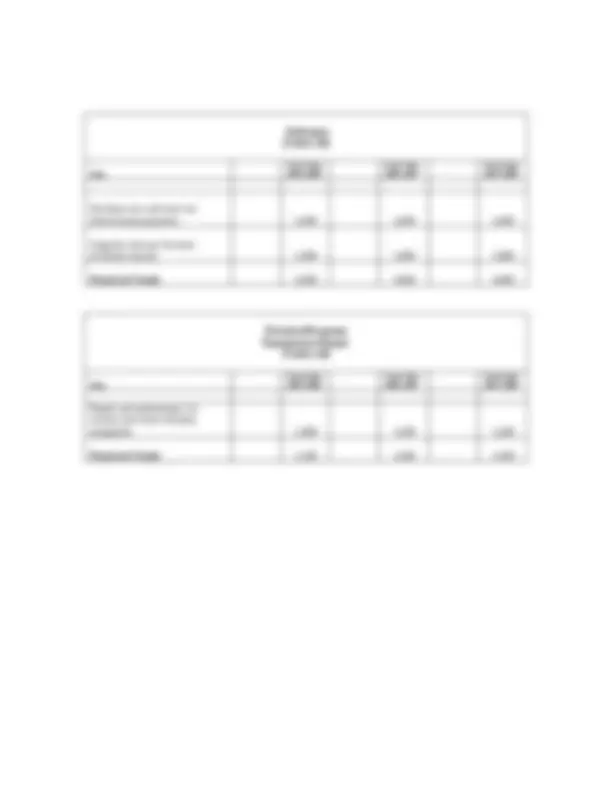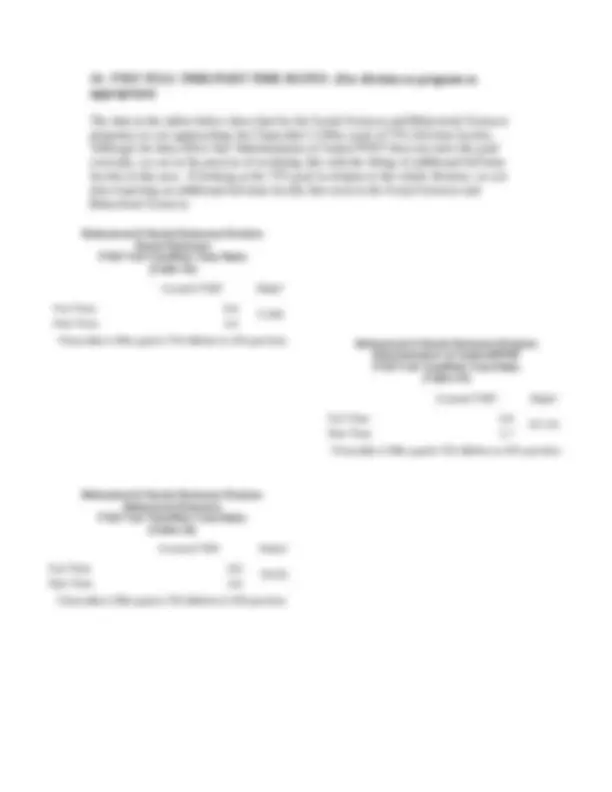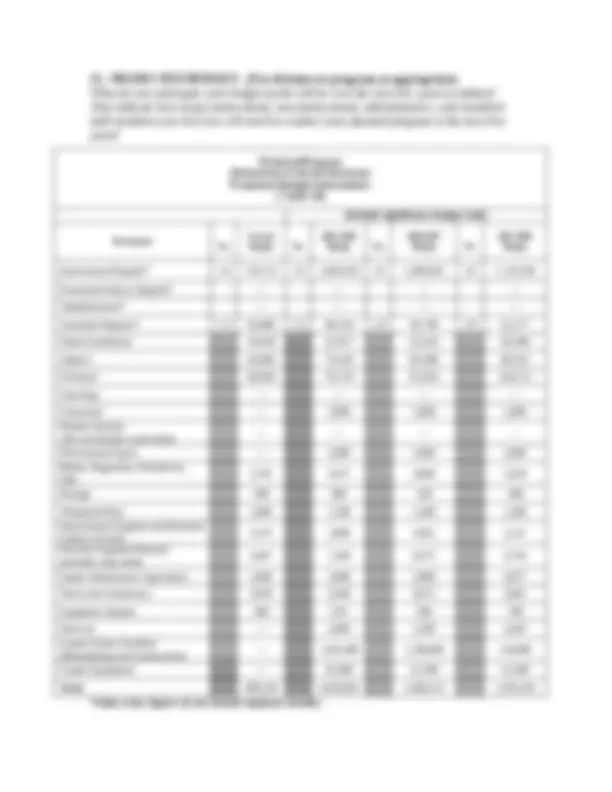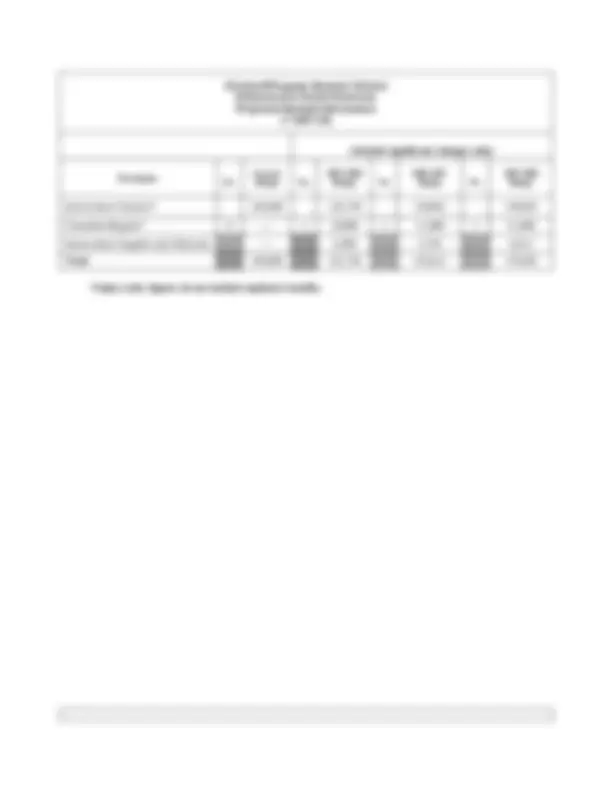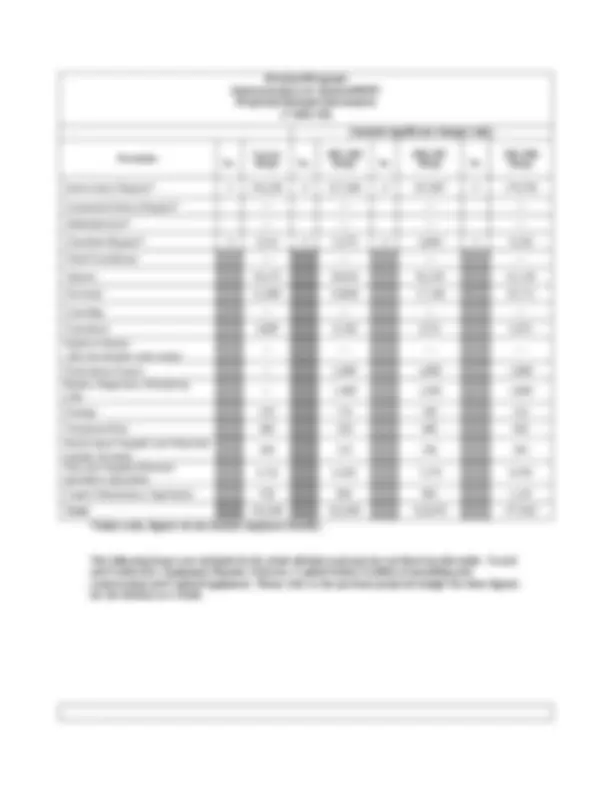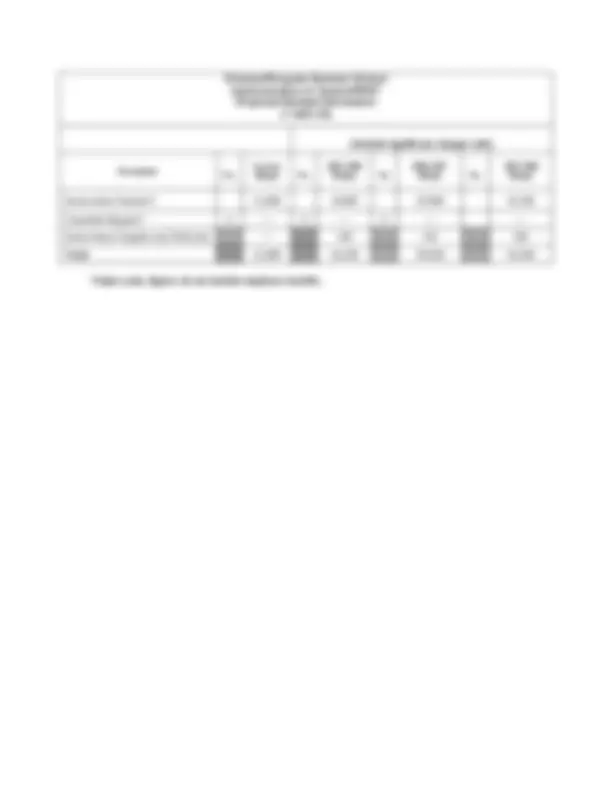Download Demographic Trends & Challenges in Public Safety Education: Correctional & Behavioral Prog and more Study notes Psychology in PDF only on Docsity!
IMPERIAL VALLEY COLLEGE
PROGRAM REVIEW AND PLANNING
BEHAVIORAL & SOCIAL SCIENCES DIVISION
1. PROGRAM COURSES/MAJOR AREAS - BEHAVIORAL & SOCIAL
SCIENCES
Div. Discipline Subj. New Course Old Course Description Di v Cat
BSS BSCI ADS ADS 101 ADS 51 Alcoholism: Intervention, 1 12 BSS BSCI ADS ADS 110 ADS 52 Physiological Effects of Alcohol 1 13 BSS BSCI ADS ADS 120 ADS 9 Introduction to Counseling 1 72 BSS BSCI ADS ADS 130 ADS 53 Group Leadership and Group Pro 1 15 BSS BSCI ADS ADS 150 ADS 10 Sociology of Minority Groups 1 73 BSS BSCI ADS ADS 160 ADS 50 Human Services Changing Society 1 11 BSS BSCI ADS ADS 200 ADS 54 Family Counseling Approaches 1 27 BSS BSCI ADS ADS 210 ADS 55 Crisis Intervention and Referral 1 28 BSS BSCI ADS ADS 220 ADS 11A Practicum 1 74 BSS BSCI ADS ADS 221 ADS 11B Practicum 1 107 BSS BSCI ADS ADS 230 ADS 58 Alcohol and Drug Prevention 1
BSS BSCI ADS ADS 290 ADS 57AD Current Issues in Drug Abuse 1 46 BSS BSCI ANTH ANTH 100 ANTH 1 Physical Anthropology 1 53 BSS BSCI ANTH ANTH 102 ANTH 2 Cultural Anthropology 1 54 BSS BSCI ANTH ANTH 104 ANTH 4 California Indians 1 59 BSS BSCI ANTH ANTH 106 ANTH 6 Indians of North America 1 61 BSS BSCI ANTH ANTH 108 ANTH 8 Indians of the Southwest 1 63 BSS BSCI ANTH ANTH 110 ANTH 3A Introduction to Archaeological 1 55 BSS BSCI ANTH ANTH 112 ANTH 3B Introduction to Archaeological 1 56 BSS BSCI ANTH ANTH 114 ANTH 16A Prehistoric Ceramics 1 71 BSS BSCI ANTH ANTH 210 ANTH 3C Advanced Archaeological 1 57 BSS BSCI ANTH ANTH 212 ANTH 3D Adv. Archaeological Excavation 1 58 BSS BSCI ANTH ANTH 214 ANTH 16B Advanced Prehistoric Ceramics 1 106 BSS BSCI PSY PSY 101 PSYCH 1A Introduction to Psychology 1 931 BSS BSCI PSY PSY 120 PSYCH 9 Introduction to Counseling 1 938 BSS BSCI PSY PSY 130 PSYCH 53 Group Leadership & Process 1 974 BSS BSCI PSY PSY 142 PSYCH 3 Psychology of Adjustment 1 934 BSS BSCI PSY PSY 144 PSYCH 16 Psy Interpersonal Relationships 1 945 BSS BSCI PSY PSY 146 PSYCH 4 Psychology of Human Sexuality 1 930 BSS BSCI PSY PSY 200 PSYCH 2 Biological Psychology 1 933 BSS BSCI PSY PSY 202 PSYCH 1B Learning 1 932 BSS BSCI PSY PSY 204 PSYCH 35 Dev Psy Concepts to Death 1 962 BSS BSCI PSY PSY 206 PSYCH 17 Social Psychology 1 946 BSS BSCI PSY PSY 208 PSYCH 14 Abnormal Psychology 1 943 BSS BSCI PSY PSY 210 PSYCH 55 Crisis Intervention & Ref Tech 1 975
BSS BSCI PSY PSY 212 PSYCH 18 Research Methods in Psychology 1 947 BSS BSCI PSY PSY 220 PSYCH 11A Practicum 1 940 BSS BSCI PSY PSY 221 PSYCH 11B Practicum 1 979 BSS BSCI SOC SOC 101 SOC 1 Introductory Sociology 1
BSS BSCI SOC SOC 102 SOC 2 Contemporary Social Problems 1
BSS BSCI SOC SOC 110 SOC 33 Marriage and the Family 1
BSS BSCI SOC SOC 124 SOC 30 Criminology 1
BSS BSCI SOC SOC 150 SOC 10 Sociology of Minority Groups 1
BSS BSCI SOC SOC 160 SOC 50 Human Serves Changing Society 1
BSS BSCI SOC SOC 206 SOC 17 Social Psychology 1
BSS BSCI SW SW 220 SW 220 Introduction to Social Work 1
BSS PBSF AJ 100 AJ 21 Intro to Admin. Justice 1 644 BSS PBSF AJ AJ 080 AJ 51 Security Guard (Arrest) 1 831 BSS PBSF AJ AJ 100 AJ 21 Intro to the Admin of Justice 1 644 BSS PBSF AJ AJ 102 AJ 23 Concepts of Criminal Law 1 651 BSS PBSF AJ AJ 104 AJ 25 Legal Aspects of Evidence 1 653 BSS PBSF AJ AJ 106 AJ 26 Prin & Proc of the Just System 1 654 BSS PBSF AJ AJ 110 AJ 28 Police Community Relations 1 656 BSS PBSF AJ AJ 120 AJ 39 Report Writing 1 650 BSS PBSF AJ AJ 121 AJ 32 Police Field Operations 1 645 BSS PBSF AJ AJ 122 AJ 34 Criminal Investigation 1 652 BSS PBSF AJ AJ 123 AJ 37 Juvenile Control 1 655 BSS PBSF AJ AJ 124 AJ 30 Criminology 1 669 BSS PBSF AJ AJ 125 AJ 38 Wildlife Law Enforcement 1 649 BSS PBSF AJ AJ 126 AJ 36 Traffic Accident Invst & Rptng 1 648 BSS PBSF AJ AJ 141 AJ 41 Arrest and Firearms 1 657 BSS PBSF AJ AJ 143 AJ 43 Reserve Officer Level III 1 661 BSS PBSF AJ AJ 144 AJ 44 Reserve Officer Level II 1 662 BSS PBSF AJ AJ 150 AJ 40 Advanced Officers Course 1 658 BSS PBSF CSI CSI 100 CSI 21 Introduction to Corrections 1 306 BSS PBSF CSI CSI 102 CSI 23 Concepts of Criminal Law 1 309 BSS PBSF CSI CSI 104 CSI 31 Concepts of Probation & Parole 1 675 BSS PBSF CSI CSI 106 CSI 24 Corr Interviewing & Counseling 1 432 BSS PBSF CSI CSI 108 CSI 25 Control and Supervision of Inmates 1 433 BSS PBSF CSI CSI 120 CSI 22 Report Writing 1 308 BSS SSCI GEOG GEOG 100 GEOG 1 Physical Geography 1 510 BSS SSCI GEOG GEOG 102 GEOG 2 Cultural Geography 1 511 BSS SSCI GEOG GEOG 104 GEOG 3 Economic Geography 1 512 BSS SSCI HIST
HIST 220 WOMEN IN AMERICAN HISTORY
One faculty member edits a local historical newsletter that is published
quarterly.
Faculty speak to public forums on a variety of issues.
A Chicano History project was initiated and completed by a division member.
Several faculty hold doctorates. Two others are ABD in their respective fields.
All faculty have academic interests in a variety of areas.
When funds are available, faculty attend conferences and seminars.
CHALLENGES
Develop a distance education computer and/or cable TV class
Maintain sufficient staffing levels to meet student demands for classes
More help is needed in educational technology. The classrooms are wired for
the Internet, but not connected. MIS has no direct involvement with classroom
teaching.
Lighting adjustments are needed in many classrooms so that the front screen
may be darkened while the students have sufficient light for note taking.
Students need to be encouraged to take more elective classes to round out their
educational experience.
More adjunct faculty needs to be recruited in History, Political Science, and
Geography.
A department history and political science club would immerse students in their
chosen fields.
Writing Across the Curriculum Programs need to be developed to coordinate
and link together student learning
Computer lab facilities are needed to assist in Geographical Information
Systems Curriculum.
Field Trips need to be encouraged.
Increased interaction with local high schools will improve the K-12 geography
curriculum.
More available van drivers are need with a class B license to conduct field trips.
Classroom instruction budgets need to be funded so that technology can be
purchased to aid in student instruction.
Funds for faculty conference and travel purposes need to be reinstituted.
We currently have no quantitative method for measuring student placements in
colleges, universities, and jobs. Imperial Valley anecdotal information reveals
that our social science and liberal studies students go on to be successful
professionals in many fields.
IVC has not made a firm commitment to a comprehensive distance learning
program. Obviously, our classes could be offered via computer or Cable TV, if
funds and leadership were available. Currently, many instructors have online
web pages and utilize email to make and collect student assignments.
ADMINISTRATION OF JUSTICE, CORRECTIONAL SCIENCES AND
P.O.S.T PROGRAMS.
The Public Safety programs show increases in enrollment, maintain articulation
agreements, have a climbing transfer rate, maintain a high quality of instruction,
and are awarded state certification to the POST programs. Program excellence requires
constant updating and vigilance to provide our students with strategies to successfully
compete in their areas of career and transfer interest.
STRENGTHS
To meet the growing demands within Public Safety:
Offer innovative scheduling through Friday and Saturday classes, short term
classes, and fast track scheduling;
Maintain highly qualified adjunct faculty who, by profession, are peace officers,
judges, attorneys, parole agents, and probation officers;
Recommend basic skills prerequisites, encourage students to improve their
communication and computer skills through curricula changes in the major as
well as within individual classes;
With the average Administration of Justice student being male and between
the ages of 20 - 24 years, (which is not the college average student profile) we
actively try to increase female student enrollment and role models;
Fall of 2004 hired a full time tenure track Administration of Justice instructor.
Participation with local and state organizations and committees benefit students,
enhance curricula design, increase transfer success, and student career or
promotion preparation.
Attend meetings and participate in AJAC (Administration of Justice Advisory
Committee)
Attend meetings and participate in California POST (Peace Officers Standards
and Training)
Attend meetings and participate in ARPOC (Association of Reserve Peace
Officers of California)
Attend meetings and participate in IVROP (Imperial Valley Regional
Occupational Programs)
Attend meetings and participate in IMPAC (Intersegmental Major Preparation
Articulated Curriculum).
CHALLENGES
Of challenge to the programs within Public Safety are the following concerns:
Need to obtain career or transfer follow-up/feedback and placement of students
exiting the program or classes;
Desire to improve basic skills in English reading, writing and oral
communication;
Need to increase the pass rate for entry level career exams;
Desire to increase the pass rate/placement for career advancement exams;
Development of a competitive distance education program;
Specific classes were created to allow students wanting a bachelor’s degree, after
their ADS Associate degree, to be eligible to transfer to Northern Arizona
University.
The director of our ADS program provides training to IVC counselors in the area
of substance abuse and crisis intervention as well as crises counseling to both
students and staff.
Process of implementing assessment techniques to aid the overall success rate of
students and to afford extra help for the “at risk” students.
The Psychology Department has fostered discussion with the Psychology
Department at San Diego State University regarding the needs of our student who
transfer from IVC to SDSU.
Close liaison between the Anthropology Department and the IVC Desert
Museum.
Faculty members routinely give presentations to local service clubs relating to a
variety of topics including local Alcohol/Drug Studies and recovery programs,
recent ethnographic research and/or humanitarian efforts.
ADS has developed a local outreach program for our recovering community that
involves assistance from Scripps McDonald Center.
CHALLENGES
No course management system in place to facilitate the development of distance
learning classes.
Number of adjunct faculty insufficient to allow for further diversity and number
of course section to meet further student demand.
Current student population generally ill-prepared for beginning collegiate level
work – reading comprehension, critical thinking and basic quantitative skills.
Increase the number of classrooms that have reliable Internet access and
permanent audio/visual equipment.
Current institutional budgetary constraints limit development of Internet courses
as well as instructional aides such as videos, visual aids and activities.
Hiring of an additional faculty member in the area of Sociology and/or Alcohol
Drug Studies.
DIVISION STRENGTHS & CHALLENGES
Five new faculty, two replacement faculty and three faculty for the newly created
Geography, Anthropology and Administration of Justice positions, were added to
the division in Fall of 2004.
All faculty are interested in diverse scheduling and teaching techniques. This
would include weekend classes and the desire to participate in distance learning.
Very cooperative group of faculty members who are willing to cooperate with
each other to accomplish division goals.
All departments in the division desire to increase adjunct faculty to meet our
demand for classes.
Budget limitations for the division have limited our opportunities for additional
instructional materials and technology.
3. STUDENT DEMOGRAPHICS
SOCIAL SCIENCES
Age
45% of our divisional students are under 20 years of age (vs. 31% IVC total)
30% are between 20-24; 25% are over 25 years old. We conclude that many
students take social science courses in general education at IVC immediately after
high school.
Gender
Division students number 2000 per semester. 40% are male and 60% are female.
This is close to the IVC average.
Behavioral Science Division Social Science Discipline Demographic Information Age (in %) ( Table 4 ) Term < 20 20 - 24 25 - 29 30 - 49 > or = 50 Program IVC Program IVC Program IVC Program IVC Program IVC Fall 02 44.2 25.6 27.3 29.3 9.0 12.4 15.8 28.0 3.7 4. Fall 03 (^) 47.3 27.8 28.5 30.6 7.7 11.8 13.6 25.7 2.9 4. Fall 04 (^) 44.6 39.8 32.0 33.6 7.3 8.7 12.5 15.7 3.5 2. Avg. 45.4 31.1 29.3 31.2 8.0 11.0 14.0 23.1 3.4 3. Behavioral Science Division Social Science Discipline Demographic Information Gender (Table 3) Term Head Count Male (%) Female (%) Program IVC Program IVC Program IVC Fall 02 1991 8432 39.4 37.3 60.6 62. Fall 03 2004 8399 40.8 37.4 59.2 62. Fall 04 1996 8132 39.2 38.3 60.8 61. Average 1997 8321 39.8 37.7 60.2 62.
Residence
The largest percentage, 33%, come from El Centro. Next is Calexico, with 31%.
Brawley and Imperial report single digit student populations at IVC. Division
figures correspond to the institution as a whole.
Behavioral Science Division Social Science Discipline Demographic Information Residence (in percentage) ( Table 5 ) Term Brawley Calexico Calipatria El Centro Holtville Imperial Winterhaven Other Pgm IVC Pgm IVC Pgm IVC Pgm IVC Pgm IVC Pgm IVC Pgm IVC Pgm IVC Fall 02 14.8 13.7 30.2 29.8 2.2 2.2 32.5 33.8 5.3 5.2 7.6 7.6 0.1 0.0 7.2 7. Fall 03 14.4 13.3 29.9 30.1 1.3 2.1 32.8 32.9 5.5 5.4 8.1 7.9 0.0 0.1 7.9 8. Fall 04 12.4 13.0 34.2 30.8 2.3 2.2 31.8 32.0 4.3 5.2 7.2 8.4 0.1 0.2 7.8 8. Avg. 13.9 13.3 31.4 30.2 1.9 2.2 32.4 32.9 5.0 5.3 7.6 8.0 0.1 0.1 7.6 8.
ADMINISTRATION OF JUSTICE, CORRECTIONAL SCIENCES AND P.O.S.T.
PROGRAMS
Age
Student age distribution indicates that students below 20, and from 20 to 24,
constitute over three-fourths of Correctional Science enrollment. While the
majority of CS students are between the ages of 20 to 24, it is closely followed by
the under 20 cohort. Compared to the general age distribution at IVC, the under
20 group enrolled in Correctional Science is slightly higher than the IVC age
cohort. It should be noted however, that the 20 to 24 age group is significantly
higher, (almost 10 percentage points), than the same age group enrolled at IVC.
Gender
Student gender data in the three-year trend from Fall, 2002 through Fall, 2004
show that approximately two-thirds of Correctional Science students are male,
while the remaining one-third are female. It appears however, that more recently
there has been a slight increase in male student enrollment and a corresponding
decrease in female students. The increase in male student enrollment in the CS
program appears to mirror the increase in male student enrollment at IVC in
general. The decline of CS female enrollment also appears to follow the decline
of overall female enrollment at IVC.
Behavioral Science Division Correctional Science Discipline Demographic Information Gender (Table 3) Term Head Count Male (%) Female (%) Program IVC Program IVC Program IVC Fall 02 429 8432 62.5 37.3 37.5 62. Fall 03 465 8399 62.4 37.4 37.6 62. Behavioral Science Division Correctional Science Discipline Demographic Information Age (in %) ( Table 4 ) Term < 20 20 - 24 25 - 29 30 - 49 > or = 50 Program IVC Program IVC Program IVC Program IVC Program IVC Fall 02 (^) 34.7 25.6 40.8 29.3 11.7 12.4 12.1 28.0 1.2 4. Fall 03 37.4 27.8 38.5 30.6 11.4 11.8 12.0 25.7 0.6 4. Fall 04 39.1 39.8 43.8 33.6 9.3 8.7 7.7 15.7 0.2 2. Avg. 37.1 31.1 41.0 31.2 10.8 11.0 10.6 23.1 0.7 3.
Fall 04 1.0 1.9 1.8 1.3 92.1 87.6 0.4 0.4 4.7 8.5 0.0 0. Avg. 0.6 2.0 1.3 1.4 90.1 86.9 0.7 0.4 6.8 9.1 0.4 0.
Residence
Review of the information provided shows that there has been increased
participation in the Correctional Science program from students who live in
Calexico, Holtville and Other. However, there has been a general decline of
enrollment of students in the program who live in Brawley, Calipatria, El Centro
and Imperial. It terms of general IVC student residency patterns, students living
in Brawley, Calipatria and Holtville, have a greater tendency to enroll in
Correctional Science courses.
Behavioral Science Division Correctional Science Discipline Demographic Information Residence (in percentage) ( Table 5 ) Term Brawley Calexico Calipatria El Centro Holtville Imperial Winterhaven Other Pgm IVC Pgm IVC Pgm IVC Pgm IVC Pgm IVC Pgm IVC Pgm IVC Pgm IVC Fall 02 14.9 13.7 27.3 29.8 4.9 2.2 30.3 33.8 8.2 5.2 6.8 7.6 0.0 0.0 7.7 7.
Fall 03 15.1 13.3 25.8 30.1 4.5 2.1 32.7 32.9 6.9 5.4 8.2 7.9 0.0 0.1 6.9 8. Fall 04 12.2 13.0 33.5 30.8 3.2 2.2 29.4 32.0 8.3 5.2 4.6 8.4 0.0 0.2 8.9 8. Avg. 14.1 13.3 28.9 30.2 4.2 2.2 30.8 32.9 7.8 5.3 6.5 8.0 0.0 0.1 7.8 8.
BEHAVORIAL SCIENCES
Age
Behavioral sciences attracts a generally younger student population (<20 and 20-
34) than does IVC in general, but relatively fewer students in the 30-49 age
grouping than IVC. There was a 50% decline in the >50 age group in Fall 04
compared to Fall 03 and are significantly lower than IVC in general. Perhaps
behavioral science courses are used more by younger, transfer students as their
initial course selections than by older, more academically specifically focused
students.
Behavioral Science Divisional Behavioral Science Discipline Age (in %) ( Table 4 ) Term < 20 20 - 24 25 - 29 30 - 49 > or = 50 Program IVC Program IVC Program IVC Program IVC Program IVC Fall 02 38.7 25.6 35.9 29.3 9.1 12.4 15.1 28.0 1.2 4.
Language
Approximately 15.6 % more students in the behavioral science program reported
English as their primary language than for IVC students in general. Given that the
behavioral science student data was also included in the IVC general data would
seem to add additional validity to this differential. It may be explained by the
observation that the IVC general student data includes a large number of ESL
enrolled students, which by their enrollment indicates a non-English usage. If
behavioral science language data were to be compared to only IVC university
transfer course data this differential might be better explained.
Ethnicity
Regarding student ethnicity
there do not appear to be
any significant differences between behavioral science and IVC in general. The
information shows that Asian, Hispanic and Native-American student percentages
have remained about the same from Fall, 2002 through Fall, 2004, in the
Behavioral Sciences while Afro-American students have increased slightly.
There has been slight decrease in White students during this time in the program.
Behavioral Science Division Behavioral Science Discipline Demographic Information Ethnicity (in percentage) ( Table 2 ) Term Asian Afro American Hispanic Native American White Other Program IVC Program IVC Program IVC Program IVC Program IVC Program IVC Fall 02 1.4 2.0 1.4 1.4 85.3 86.5 0.5 0.4 10.6 9.6 0.7 0. Fall 03 1.3 2.0 1.9 1.5 85.5 86.7 0.7 0.4 10.0 9.3 0.6 0. Behavioral Science Division Behavioral Science Discipline Demographic Information Primary Language (Table 4) Term English% Other% Program IVC Program IVC Fall 02 77.1 60.0 22.9 40. Fall 03 78.1 61.2 21.9 38. Fall 04 76 63.1 23.9 36. Average 77 61.4 22.9 38.
Fall 04 1.4 1.9 1.9 1.3 86.8 87.6 0.4 0.4 9.1 8.5 0.4 0. Avg. 1.4 2.0 1.7 1.4 85.9 86.9 0.5 0.4 9.9 9.1 0.6 0.
Residence
Regarding residence of students there appears to be a slight trend toward
behavioral science students being drawn increasingly from the Brawley and less
from the El Centro areas than was true two years ago. Why this might be
happening is unexplained at this time.
Behavioral Science Division Behavioral Science Discipline Demographic Information Residence (in percentage) ( Table 5 ) Term Brawley Calexico Calipatria El Centro Holtville Imperial Winterhaven Other Pgm IVC Pgm IVC Pgm IVC Pgm IVC Pgm IVC Pgm IVC Pgm IVC Pgm IVC Fall 02 13.0 13.7 27.2 29.8 1.6 2.2 36.4 33.8 6.2 5.2 8.7 7.6 0.0 0.0 6.8 7. Fall 03 14.0 13.3 26.7 30.1 2.7 2.1 34.5 32.9 5.8 5.4 8.1 7.9 0.5 0.1 7.4 8. Fall 04 15.2 13.0 27.6 30.8 2.4 2.2 32.7 32.0 6.7 5.2 8.1 8.4 0.1 0.2 7.2 8. Avg. 14.1 13.3 27.2 30.2 2.2 2.2 34.5 32.9 6.2 5.3 8.3 8.0 0.2 0.1 7.1 8.
POL S 102 418 324 24.4 29.0 19.8 8.3 9.9 0.0 0.0 0.0 8.6 77.5 91.4 73.
POL S 800 264 197 9.1 6.6 0.0 0.0 0.0 0.0 55.8 18.3 10.2 74.6 89.8 71.
Department Average 23.4^ 22.6^ 15.0^ 8.2^ 9.5^ 0.1^ 3.5^ 1.1^ 16.5^ 74.3^ 83.5^ 64. Division Average
IVC Average 25.9 21.6 15.1 4.8 4.6 0.2 8.0 2.6 17.1 72.3 82.9 70.
Grades earned in all Social Science Departments compared to all IVC grades/retention.
It was found that the proportion of A’s awarded students in Social Sciences
courses, 23.4%, was lower than the IVC average of 25.9%.
The percentage of B’s earned by Social Science students was slightly higher than
the IVC percentage, 22.6% and 21.6% respectively.
The percentage of C’s earned by Social Science students,15.0%, is about the same
as IVC students receiving a C grade at 15.1%.
The percentage of all Social Science students receiving D’s, 8.2%, is higher than
the institutional average of 4.8%.
The percentage of F’s awarded to Social Science students, 9.5% exceeds the
institutional average of 4.6%.
The retention rate of 83.5% for the Social Science Department appears nearly equal to
that of the institutional retention rate of 82.9%. Our Success Rate however, at 64.6%,
appears to be lower than IVC’s overall Success Rate of 70.6%
Behavioral Science Division/Correctional Science Department
Grade Distribution and Retention Information
(Table 6)
Total Initial Count Total Census Count Grades – Fall 2004 Retention Rate (non "W"/census) End of Term Retention Rate (non "W"/census) Success Rate (Grade A,B,C,CR) %A %B %C %D %F %I %Cr %NC %W AJ 100 574 410 15.1 25.4 26.3 8.8 13.7 0.0 0.0 0.0 10.7 71.4 89.3 66. AJ 102 161 108 17.6 20.4 24.1 10.2 11.1 0.0 0.0 0.0 16.7 67.1 83.3 62. AJ 104 90 79 20.3 32.9 21.5 5.1 13.9 0.0 0.0 0.0 6.3 87.8 93.7 74. AJ 106 129 98 17.3 28.6 16.3 7.1 12.2 0.0 0.0 0.0 18.4 76.0 81.6 62. AJ 110 77 48 25.0 20.8 14.6 10.4 8.3 0.0 0.0 0.0 20.8 62.3 79.2 60. AJ 122 87 50 16.0 44.0 16.0 2.0 8.0 0.0 0.0 0.0 14.0 57.5 86.0 76. AJ 123 48 41 17.1 24.4 22.0 4.9 26.8 0.0 0.0 0.0 4.9 85.4 95.1 63. AJ 141 87 61 11.5 26.2 16.4 0.0 3.3 11.5 0.0 0.0 31.1 70.1 68.9 54. CSI 100 71 45 13.3 26.7 17.8 11.1 13.3 0.0 0.0 0.0 17.8 63.4 82.2 57. CSI 102 12 4 0.0 50.0 0.0 0.0 25.0 0.0 0.0 0.0 25.0 33.3 75.0 50. CSI 108 20 12 8.3 33.3 8.3 0.0 33.3 0.0 0.0 0.0 16.7 60.0 83.3 50. Department Average
Division Average 29.9^ 21.7^ 13.9^ 5.4^ 9.4^ 0.3^ 1.7^ 0.4^ 17.2^ 72.2^ 82.8^ 67. IVC Average 25.9 21.6 15.1 4.8 4.6 0.2 8.0 2.6 17.1 72.3 82.9 70.

